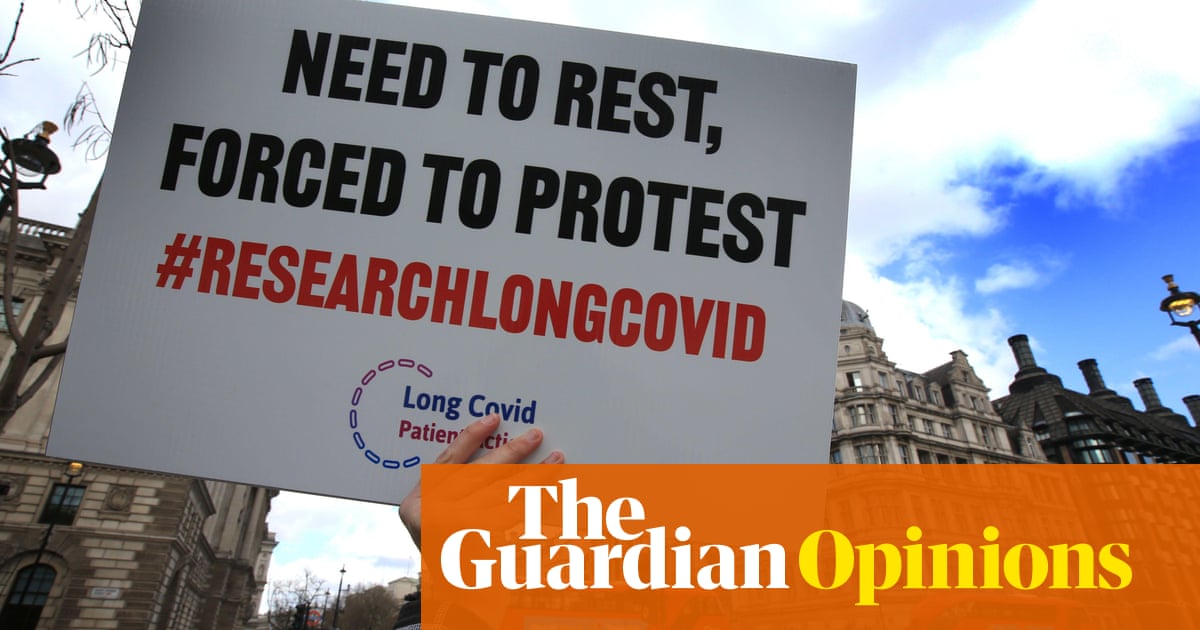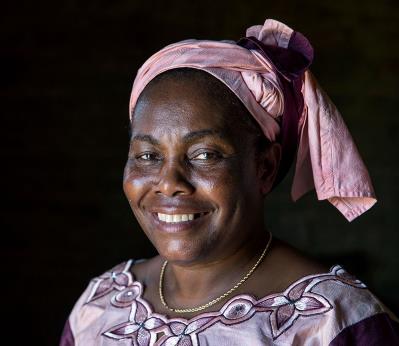
elene Fox was recovering from surgery to remove endometriosis when she caught Covid-19. It had been six weeks since her laparoscopy and although she had been walking every day, following her surgeon’s instructions, she had only been on short 30 minute walks around her neighbourhood. Then a sunny March day presented itself and Helene took advantage of it. “It was the first time I’d done a long walk through the park and along the canal in East London, and I was really excited because I thought, ‘Oh my God, I’ve got the energy for this. This is the beginning of my recovery.’”
The day after her glorious long walk, still feeling better, Helene went to the pub with friends. Ten of those friends, including Helene, ended up with Covid-19.
Helene describes her symptoms as exhaustion, shortness of breath and heaviness in the lungs. “It was in my chest. I had this pain right up underneath in my back … that was really aching. It felt like I’d been kicked in the back, and I had this constant heavy feeling on my chest.”
Helene’s friends gradually recovered and went back to work after one to two weeks. But Helene was nowhere near well enough to work. She put her slow recovery down to the surgery and the resulting pain and inflammation that she felt were still lingering in her body.
On day 16, Helene finally woke up with energy. “I did this long walk. I came back, and I was in the garden, lying in the sun. And then I felt I was getting a migraine.” At first she thought nothing of it, putting it down to spring pollen causing hay fever. But then it got worse. “I developed this sinus pain and then it turned into nausea, and my whole body ached. So I went to bed. I don’t think I was ever the same after that.”
Helene was recounting this story to me in August 2020, five months after contracting Covid-19. Her story is not unusual. Her description of feeling better and then getting even sicker after exercise has a medical name: post-exertional malaise. It is common in patients with post-viral fatigue and is a hallmark of chronic fatigue syndrome or myalgic encephalomyelitis (CFS/ME) and some other overlapping chronic pain conditions.
For the first few months of 2020, as the world was just beginning to comprehend what Covid-19 was, World Health Organization guidelines suggested people generally recovered from Covid-19 in two weeks.
By April, studies from Italy and China were documenting “a significant symptom burden in Covid-19 survivors including anxiety, sleep disorders, fatigue, limited exercise tolerance, and memory and executive function impairment”.
By July, the US Centers for Disease Control released a study that found 35% of people who tested positive for Covid-19 and had symptoms had not returned to their usual state of health two to three weeks after testing. Among those aged 18 to 34 with no prior medical conditions, one in five had not returned to their usual state of health.
In a 17 July interview, Dr Anthony Fauci said: “It’s extraordinary how many people have a post-viral syndrome that’s very strikingly similar to myalgic encephalomyelitis/chronic fatigue syndrome.”
CFS/ME is a complex and debilitating multi-system, chronic disease with a serious impact on one’s quality of life, characterized by reduced ability to perform pre-illness activity that lasts for more than six months and is accompanied by profound fatigue, which is not improved by rest. It affects between 0.2 and 0.4% of the population.
No one is suggesting that everyone who has Covid-19 symptoms beyond two weeks has post-viral fatigue or will develop CFS/ME. Too little is currently known about this disease to know where the disease ends and where post-viral fatigue sets in, and people with severe Covid-19 will obviously take longer to recover. But post-viral fatigue and CFS/ME are real and devastating.
Experts are adamant that we must act quickly to understand how viral infections lead to chronic fatigue and to prevent the worst from happening.
“The one thing we do know – and it’s true in most diseases–is that the earlier you intervene, the better off you are,” says Oved Amitay, a pharmacologist who has spent his career studying rare genetic diseases and is now the CEO of the Solve ME/CFS Initiative. “This is the opportunity to get in early because we know the trigger.”
Frances Williams, a professor of genomic epidemiology at King’s College London, is part of the team that developed the Covid Symptom Tracker app, which is collecting information from 4 million people with Covid-19, mainly in the UK and USA.
Preliminary data from the app shows 12% of people report their symptoms lasted longer than 30 days and 0.5% report symptoms lasting for more than 90 days.
Her concern is that medical systems are not set up to deal with this post-viral fatigue.
“It’s not taught well in many medical schools, so doctors are not educated in it,’” she explains. “Their usual response to this sort of problem is ‘You need to get fit again.’ And actually, that can be counterproductive. It can get worse if you try to do too much. It can give this thing called post-exertional malaise, which is a serious problem that can put people into bed for days. Having somebody understand that problem and advise against exercise is really important.”
Dr Daniel Clauw is concerned that Covid-19 could trigger or exacerbate chronic overlapping pain conditions. As the director of the Chronic Pain and Fatigue Research Center at the University of Michigan, he has spent 30 years researching chronic pain and is an internationally renowned expert on the central nervous system’s role in chronic pain states.
Clauw says two factors could lead to an increase in patients with chronic overlapping pain conditions or existing patients experiencing worsening symptoms. The first factor is contracting Covid-19, which could trigger or make worse a chronic overlapping pain condition. The second is the stress of the pandemic itself, especially if it has disrupted sleep patterns or activities that usually keep symptoms at bay.
“I think it will trigger the development of this symptom complex in a subset of people that get Covid, and make the symptoms of pain, fatigue, memory problems worse in many people that had pre-existing problems that were more affected by the pandemic.”
Helene Fox eventually managed to find a health practitioner who would see her during lockdown. She stopped Helene from doing the long, intense walks and helped her build up a manageable level of activity slowly. She understands that even when she feels great, she should not overdo it because the result will be a flare-up.
This cycle is typical in patients with chronic overlapping pain conditions.
Experts say that doctors and other health practitioners should work with the patient on a program of “pacing”, where patient and doctor agree on a set of realistic daily goals for sleep, rest, activity and social interactions. People with chronic pain often overdo things when they’re feeling well and pay for it later.
But by pacing activity levels, maintaining social interactions and restoring sleep patterns to a healthy level, they can reduce the incidence and intensity of flare-ups. There are also certain drugs that act on the central nervous system – such as amitriptyline and cyclobenzaprine, for example – that help some people.
Because of the historic lack of research into female biology and conditions that primarily affect women, there is still too little understood about these diseases, precious few effective treatment options available, and no cure. While acknowledging that, Clauw says changes in activity, sleep and social interaction often lead to results that are as good as or better than those achieved with available drugs.
But he’s pretty sure this is not what will happen – not because doctors don’t care, but because the knowledge of these conditions and how to treat them just does not exist within western healthcare systems right now. He fears many health practitioners, whether doctors, nurses or others, will either ignore these symptoms or over-medicalise them. “I think doctors have more of a tendency to try to prescribe a new medication, or refer you.”
Western medical systems are simply not designed to practise medicine in a holistic way – it is divided into specialities that really don’t correspond well to multi-system chronic pain and fatigue conditions. Few general practitioners or specialists have appointments long enough to allow the kind of consultation that takes in a full explanation and allows for planning with the individual patient in diseases where few effective treatment options are available – the way medicine is funded means they can’t. The current model rewards doctors who see the most patients in the least time.
Katy Vincent, a gynaecologist, agrees with Clauw but warns that a one-size-fits-all approach to treating chronic pain and fatigue doesn’t work. No single chronic pain or fatigue patient is the same as the next and each will have varying ability to do any activity at all. An individualized plan that takes into account the patient’s own goals is required for every person. Understanding an individual’s limits in order to avoid post-exertional malaise is complex and not something that can be achieved in a 10-minute consultation.
In Vincent’s pain clinic, initial appointments are one-hour long, which she says still doesn’t capture the full story. Dr Clare Fairweather, an Australian GP specialising in chronic pelvic pain, also holds initial appointments of one hour to take down the full symptom scope and to understand the patient’s priorities. One positive out of Covid-19 may be the realization that there is overdue need for longer consultations when dealing with chronic conditions and additional funding for the expansion of chronic pain and fatigue services.
Critically ill survivors of Covid-19, especially those who were admitted to intensive care units, are at particular risk of developing chronic pain.
Since we know this disease has affected marginalised communities most severely and that these people often already have trouble accessing healthcare and being believed, this presents a huge challenge to policymakers and healthcare systems. The severity of the disease in these people is itself a facet of existing health inequalities. The very characteristics that make certain people more susceptible to severe Covid-19 – such as co-morbid conditions including obesity, diabetes and cardiovascular disease – also make them more susceptible to chronic pain.
“Given the number of global infections, this suggests a cohort of critically ill survivors of unprecedented size,” the authors of a study on chronic pain experienced by people after they’ve had Covid-19 wrote.
Unless quite radical changes take place within healthcare systems, we could see a wave of disability descend upon society, and a drastic reduction in the quality of life of hundreds of thousands, if not millions, of people.
While this unprecedented pandemic has been a time of immense stress and trauma, there are emerging silver linings for healthcare and for people who suffer from chronic fatigue and pain conditions.
Healthcare systems have had to make many radical changes to adapt. This has shown that medical practice can change rapidly without major repercussions. Some of those changes have led to huge improvements in patient care. The adoption of telehealth appointments has brought benefits to previously underserved communities, including some people living with disability and those who live in remote areas.
Anyone who lives with chronic fatigue and/or pain can immediately recognize the benefits of being able to arrange tele-health appointments. When just leaving the house can be a trial in itself, being able to still see your healthcare practitioner during a pain or fatigue flare-up could be a godsend.
Flexible working is one of the main changes that may benefit women. First, it has the potential to create more equal sharing of housework and childcare responsibilities if both partners are able to work from home or arrange flexible work hours.
Second, it may allow more people who live with chronic pain or fatigue to stay true to their self-management programs and to have more control over their “pacing”.
While Vincent hesitates to be definitive about this because the data analysis is not yet complete, based on her own patients she believes there is a group of people with endometriosis who may have got a lot better during the pandemic. She has seen some patients who have told her that not having to commute, not having to juggle so much, not sitting at a desk all day and not feeling so stressed has led to an improvement in their symptoms.
“This feeds into what a number of us have been saying for a long time, which is that the pain associated with endometriosis isn’t just driven by the endometriosis – there are likely to be a whole load of other lifestyle factors and mental health factors.”
Katy Vincent’s international study will inform services offered to people with endometriosis based on what they say they want and need. This could result in a huge step forward for this often-neglected group of people. All people needed to participate in Vincent’s study was a confirmed endometriosis diagnosis and access to the internet.
This is an opportunity for those who live with chronic pain and fatigue to be heard and to participate in research that could lead to real improvements in their quality of life.
The pandemic has forced society to recognize the damage that health inequality does to people and to society at large. This is most visible in the United States, but governments can no longer deny it exists in the UK, Canada and Australia, where universal healthcare systems are supposed to ensure equal access.
If this moment passes without medicine truly listening to patients with long Covid and adapting to serve them better, society could be left with a major disability burden and lost life opportunities for hundreds of thousands of people.
This is an excerpt from Pain and Prejudice: How the Medical System Ignores Women –And What We Can Do About It, by Gabrielle Jackson, available now from Greystone Books. Excerpted with permission of the publisher.












